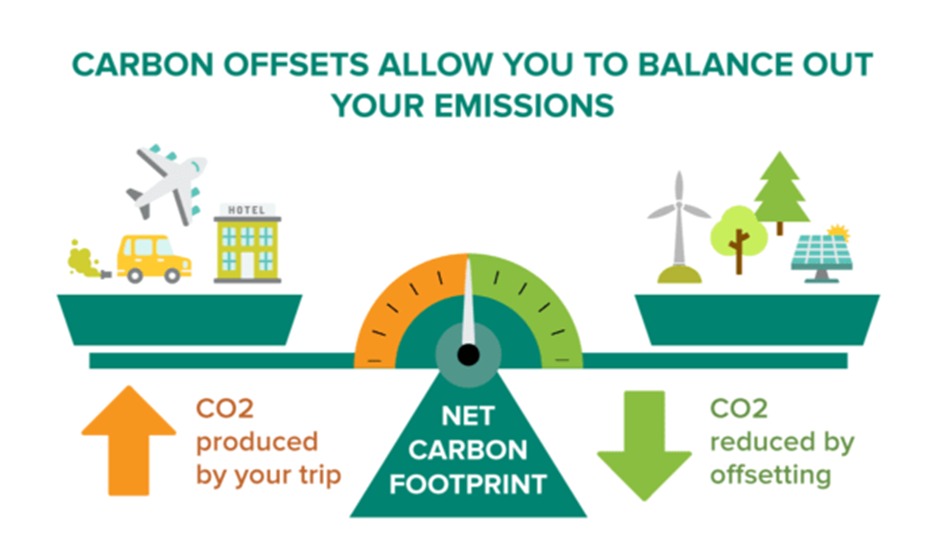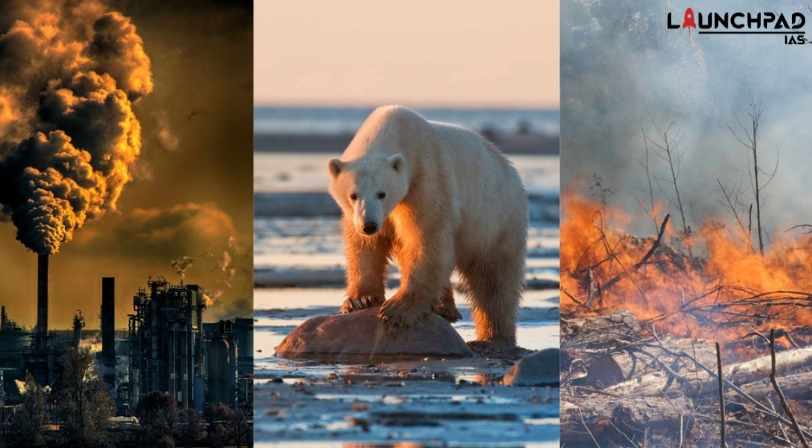Carbon Sink vs Carbon Source
- A carbon sink is anything that absorbs more carbon than it releases. A carbon source is anything that releases more carbon than it absorbs.
- Forests, soils, oceans, and the atmosphere all store carbon, and this carbon moves between them in a continuous cycle (carbon cycle). This constant movement of carbon means that forests, soils, atmosphere, and oceans act as sources or sinks at different times.
Carbon sequestration
Carbon sequestration is the process of capture and long-term storage of atmospheric carbon dioxide. Proposers suggest slowing the atmospheric and marine accumulation of greenhouse gases as a way to address the issue.
Carbon Credit
Carbon Credit focuses on reducing greenhouse gas emissions into the environment. A Carbon Credit is a tradable certificate or tradable permit that allows the holder of the credit the right to emit 1 ton of carbon dioxide or other greenhouse gases of the same amount. It is an offset for producers of such greenhouse gases. The main goal of Carbon Credit is to reduce the emission of carbon dioxide and other greenhouse gases that contribute highly to global warming.
The concept of carbon credits is based on the idea that companies and individuals can take steps to reduce their carbon emissions and then sell those reductions as credits to other organizations that may not be able to make similar reductions. In this article, we will explore more about Carbon Credits, Carbon Trading, the Carbon Market, and their potential impact on the environment.
How it works?
- The main motive of Carbon Credit is to reduce the emission of GHGs so that climate change can be slowed down. Carbon Credit allows the emission of greenhouse gases equivalent to one ton of carbon dioxide.
- With this process, the nations can allot a certain number of carbon credits, and they can trade them.
- It would help to restore the balance of worldwide emissions of greenhouse gases.
- The intention is to reduce the number of Carbon Credits with time. It would allow companies across the globe to figure out innovative ways to reduce greenhouse gases on their own.
Types of Carbon Credits
- Voluntary emissions reduction (VER): A carbon offset that is exchanged involuntary market for credits.
- Certified emissions reduction (CER): credits created through a regulatory framework with the aim of offsetting emissions from a project.
Carbon Offset
A carbon offset is a mechanism that allows individuals or businesses to mitigate their carbon footprint by investing in projects that reduce or remove an equivalent amount of greenhouse gas (GHG) emissions from the atmosphere. In essence, it’s a way to neutralize one’s carbon emissions by supporting initiatives that combat climate change.
How Does Carbon Offset Work?
The process of carbon offsetting involves several key steps:
- Assessment: Individuals or businesses assess their carbon emissions, often with the help of specialized tools or experts.
- Purchase: They then purchase carbon offset credits equivalent to their emissions. These credits represent a reduction of one metric tonne of carbon dioxide (CO2) or an equivalent amount of GHGs.
- Investment: The funds from credit purchases are invested in various projects aimed at reducing emissions. These projects span a wide range of sectors, from reforestation and renewable energy to methane capture and soil management.
- Certification: Upon completion of the project, a certificate is provided to the individual or organization as proof of their carbon offset contribution.

Also, check out: EL NINO AND LA NINA


